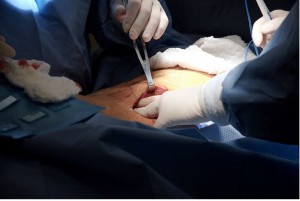Total abdominal hysterectomy, subtotal hysterectomy and radical hysterectomy are the different types of hysterectomy procedures that are performed. Your surgeon will decide on which type of hysterectomy should be done depending on the problem. Hysterectomies are normally prescribed for the following reasons.
- Cancer in the reproductive organs
- Endometriosis occurs when the cells from the lining of the uterus grow in other parts of the body. It is often a very painful condition.
- Pelvic pain and abnormal vaginal bleeding.
- Growth of fibroids in the uterus.
- Uterus prolapse, a condition when the uterus slides into the vaginal canal
Doctors recommend a hysterectomy only when all other treatment options have been explored and this is determined during a hysterectomy diagnosis.

Types of Hysterectomy
Total Abdominal Hysterectomy:
Under complete or total hysterectomy, the cervix and the uterus are removed. This is the most commonly seen form of hysterectomy and is normally recommended in the case of cancer or fibroids growing in the uterus.
The surgery is invasive and recovery periods could extend to as much as six to eight weeks. There will be several restrictions imposed on you during this period. For example, you will be prohibited from lifting weights or straining too much.
Subtotal Hysterectomy:
This kind of hysterectomy involves the removal of the upper portion of the uterus. The cervix and the ovaries are left intact. It is also known as Partial Hysterectomy. Doctors normally recommend a subtotal hysterectomy if there is no cancer, and if the pap tests results are clear.
Patients who undergo subtotal hysterectomy may continue to menstruate. This is because the cervix is not removed and it may contain enough tissues for menstruation to take place.
Radical Hysterectomy:
A radical hysterectomy is done when there is cancer involved. The surgery involves the removal of the uterus, cervix, upper vagina as well as supporting tissues. Sometimes, the ovaries and the fallopian tubes are also removed. The procedure is then known as bilateral salpingo oophorectomy. It is also recommended for patients suffering from endometriosis.
With newer developments in the medical field, a hysterectomy does not always involve an abdominal surgery. Newer approaches like vaginal hysterectomy and laparoscopic hysterectomy are becoming popular due to quicker recovery. An abdominal hysterectomy will require at least a 3 day hospital stay. There is also some scarring involved.
The decision on which hysterectomy procedure and what type of hysterectomy should be performed would depend on the reason for the surgery and the health condition of the patient.